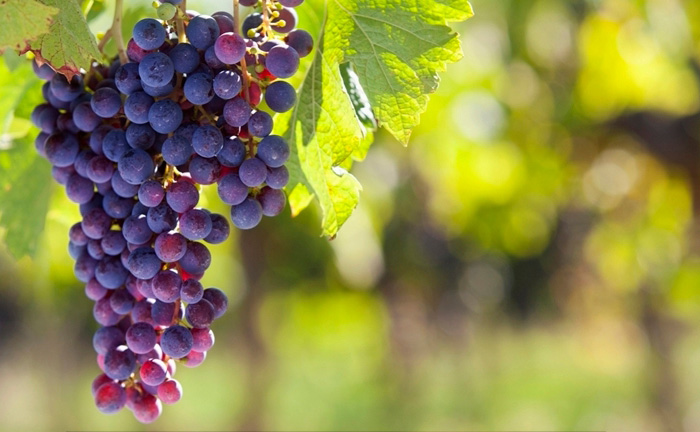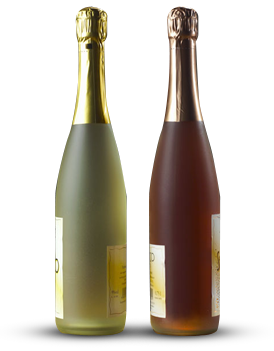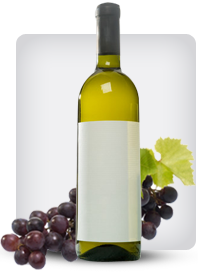

Category: Malbec Wine
How to Look Like a Wine Expert
Posted onEver wonder why you see wine connoisseurs stick their noses into their wine glass when the wine steward brings a new bottle of wine to the table? They are “tasting” the wine with their noses.
Believe it or not, your tongue can only taste four things: sweet, salty, sour, and bitter. All the other nuances of taste actually come through a complicated relationship between taste and smell. It is the nose and the nasal passage at the back of the throat that make what we taste in our mouths flavorful.
Inspecting and smelling the cork and sniffing the wine lets the person who ordered the wine evaluate it before putting into his or her mouth. If the wine has been spoiled, these two steps will usually reveal the problem.
Improper wine storage or contamination with certain bacteria can make a wine taste perfectly terrible. You wouldn’t want to put it in your mouth.
After showing you the bottle and removing the cork, the sommelier, or wine steward, will hand you the cork to inspect and sniff. If the cork appears to have deteriorated or smells bad, you should immediately refuse the wine.
If all appears to be well with the cork, the sommelier will pour a small amount of the wine into your glass.
Keep the base of your glass flat on the table and swirl the wine gently around. This mixes air with the wine and vaporizes the complex aromas. Quickly lift the glass and stick your nose into the glass as far as you can and smell the wine.
Some people say that keeping your mouth open while you sniff the wine will help you perceive the full aroma.
When a wine is badly “flawed,” it will often be immediately apparent in it’s “nose,” which is the term wine lovers use for it’s smell. If the nose of the wine is not inviting, and you aren’t immediately tempted to taste it, don’t hesitate to return the bottle to your wine steward. You should immediately be offered a replacement bottle.
Keep in mind that if there are strong scents around you, they can compete with the wine you are evaluating. If you or the person next to you are wearing strong perfume, this can throw off your nose. If there is pungent food being served nearby, this can also affect what you smell in the wine glass.
Once your nose has had first crack at the wine, and the wine has passed the nose test, then take a sip and swirl the wine around in your mouth. Give the sommelier a nod if you approve, and only then will he proceed to serve your chosen wine to your guests at the table.
Related Malbec Wine Articles
Story of the Perfect Wine Glass
Posted onDrinking wine is always a pleasure but drinking with the perfect wine glasses is always going to make your wine a delight. So here is a guide to choose the perfect wine glass for you.
In the market there are many types of wine glasses of different quality and design. So while you are choosing a bottle of wine make sure that you first seek in the market and decide upon the best plan. However there are a number of manufacturers in the market which offer you excellent wine glasses but they are expensive though and thus are in accordance with the wines.
Besides being the massive amount of glasses available in the market, there are three wine glasses which make the exception. The first in the list is the white wine glass of standard shaped. Try it out with a bottle of champagne and a bowl of red. However there are other recommendations also and make sure that you make the best choice.
The very first thing you should see is the material of which they are made. Make sure that the glass is clean and plain. In order to have the pleasure of the wine watch out for the color of the wine like the age of the wine and the quality of wine. Wine glasses are also made up of frosted or colored glass and the materials made up of silver and pewter are definitely not desirable.
Next, make sure that glasses are of adequate size and that’s why a glass should be of measurable in a way that enough quantity wine could be poured and wine could be swirled in the glass and therefore free the aromas of the wine which is crucially important.
Make sure that it should have a stem so that the wine glass can be held easily without having any oily fingerprints. Also, it helps the wine to be at right temperature. You must be wondering how to do this thing, as you hold the wine glass to be warmed up and keep it cool from the area from which you are holding.
In the last, one of the most crucial aspect is that the shape of the bowl is of sheer importance. A superior wine glass is narrow from the top and it is broader from the bottom. Besides looking good, it has a multifunctional purpose.
History of Wine Making
Posted onThe history of wine can be classified into four periods: the Ancient Times, the Dark Ages, the New World and the Modern Days.
Ancient Times
Mesopotamia. Evidence of grape cultivation and wine production were found dating as far back as 6000BC.
Egypt. Egyptians made first records of grape harvest and wine making. Wine was regarded a measurement of one’s social status and is used for religious rituals.
Greece. Wine played an important part in the religion of ancient Greece particularly attributed to the god Dionysus. It was also regarded as a social drink for the privileged upper class.
Rome. Wine making technology was considerably improved and wine became available even to the common people.
China. The Chinese initially used wild grapes for their wine, cultivation of grapes didn’t start until after Zhang Qian’s exploration to Western Kingdoms where he acquired vines. Wine from grapes was therefore considered exotic and were reserved only for the Emperor’s consumption.
Dark Ages
Following the decline of Rome, the Christian Church became a staunch supporter of wine necessary for celebration of the Catholic Mass while Muslim chemists pioneered the distillation of wine for medicinal purposes.
Middle East. Alcoholic drinks were prohibited, but alcohol production particularly wine, have thrived. Egyptian Jews leased vineyards from the Fatimid and Mamluk governments and produced wine for sacramental and medicinal use. Christian monasteries in Levant and Iraq cultivated grapes and distributed their vintages to taverns located inside monastery grounds. Zoroastrians in Persia and Central Asia also engaged in wine production, though not much is known regarding their wine trade. However, they are known for their taverns.
Medieval Europe. Benedictine monks were one of the largest producers of wine in France and Germany, followed closely by the Cistercians. The Templar, and Carmelite orders were also notable wine producers.
New World
New World wines came to a rise and challenged Old World wines in the 19th century.
The Americas. Grapes were brought to what is now known as Latin America by Spanish conquistadores. Succeeding waves of immigrants imported grapes from France, Italy and Germany.
American wine was generally looked upon as inferior to European product until the latter half of the 20th century; New World wine began to gain respect after a surprising showing at the 1976Paris Wine tasting.
Australia, New Zealand and South Africa. Until late in the 20th century, Australia exported mostly to the United Kingdom while New Zealand kept most of its wine internally and South Africa was closed off to much of the world market due to apartheid.
Modern Days
Wine making developed greatly in terms of scientific background therefore allowing a lot of things that were once impossible to be accomplished. Wine makers of this day are now able to gain total control of every stage in wine making. The challenge now for wine makers is to produce wine for a much larger market without losing the character and distinct flavor of their wines. More and more countries are now producing more varieties of wine and advances in technology will ensure that such trend will continue.
Wine Making and Tasting
Posted onIn your search for wine making recipes online, you will encounter a variety of interesting recipes from which to choose; there are standard ones for beginners, variations from the classics, innovative ones that are exciting to make, and there are the organic recipes to keep you fit and healthy.
With a jug of water, some yeast and pectic enzyme, some sugar, and other flavorings, there are many homemade wine making recipes you can experiment with. You can make wine from your favorite fruits like your all-time favorite grapes and strawberries as well as apples, apricots, peaches, bananas, pineapples, and all sorts of berries. You can also make them from nuts like almonds and hazelnuts. You can try roses, lilac, and dandelions, too. There is a world of wine making recipes out there, and they’re just a click away.
To say a wine is sound and round or well-rounded, means it is well-balanced. Smooth means that the wine is just right, while sharp and rough mean that the wine is imbalanced a bit strong and falling between sour and tart in terms of acidity. Silky means that the wine is fine and balanced. In essence, wine has three basic components: Fruit, acidity, and tannin. To make a good wine, these three components must be in balance, not overwhelming.
There are variations in taste, such as soft in contrast to hard and light in contrast to heavy referring to tannins. Based on its flavor, a wine might be described as nutty or earthy. It would be unfavorable and faulty if it were said to be mousy, musty, moldy, or faded. As the names imply, Yuck!
A wine’s dosage means the amount of sugar added to wine, especially to sparkling wine. Thus, derive the terms sweet and dry and the semi’s in between. Cloying, on the other hand, suggests that the wine is too sweet for comfort.
As a whole, a wine should have a finish that is pleasant just as you swallow, and an aftertaste that is likewise pleasant after you swallow the wine and it lingers inside your mouth.
Aroma is how a young wine smells. Green is what it tastes like. Clean is when you have no complaints, and herbaceous is as grassy and organic as they get. Thin is when the wine is bland, and hot is when wine really burns. It’s for fire-breathing dragons and not for you.
But the most important ingredients of all, you find inside yourself. Wine making involves a passionate desire to learn. It entails patience and discipline. It takes time. You ferment, blend, and age along with it, with grace. It takes a real love for wine, be it white or red, sweet or dry, crackling or sparkling, local or foreign.
They say the best way to know wine is to drink some and enjoy some. Get to know the experience of it. Appreciate the nuances of each unique kind and brand. Wine can be very much a part of every dining experience and many celebrations in our lifetime.
There are many good wine recipes and every recipe can be extraordinary.
Related Malbec Wine Articles
Wine Making Yeast Bits
Posted onWhat separates wine from simple juice is the fermentation process in wine making. Fermentation involves wine making yeast, not any other type of yeast like your bread yeast.
Importance
Wine yeast is the most important ingredient in wine making. Not only as an ingredient but the process of mixing it with the must will make or break the whole batch of wine. It is said that the real winemaker is not the person making the wine but the yeast itself. The yeast works to absorb the sugar from the fruit and creating alcohol and carbon dioxide in equal portions.
Timing
The timing of mixing in the yeast is crucial as well. One can neither put the yeast too early nor too late, in the whole wine process. At best, wine making yeast is mixed in at least twenty four hours after the fruit is crushed. And it is left to stand interacting with the must for at least five to seven days, with only a few stirring twice to thrice a day.
Activation
For better results, wine making yeast must be activated first before mixing it into the fruit must. How? Mix the yeast into a cup of juice squeezed from the must and set aside for at least twelve hours before mixing it into the must. Or a cup of warm water will suffice. Do not use hot water as the temperature will kill the yeast rather than activating it. You know the yeast is active when the mixture looks like it is boiling.
Buying
Buying yeast is extremely easy. Just make sure that the label reads wine making yeast or something to that fashion. Any generic brand will make do for the amateurs. But if you are the brave type or already an aficionado, those specialty types are great choices. The amount you buy is also noteworthy, a ten milligram packet of yeast is sufficient to work on ten gallons of grape must.
So you see, even the hardest part of the wine process, which is the part involving wine yeast, is relatively easy once you know why it is crucial, what to buy and how and when to use it.
More Malbec Wine Articles
popular posts
-

Cabernet Sauvignon vs
12-02 2025Merlot: A Taste Comparison Two names stand as titans in the world of red wine: Cabernet Sauvignon and Merlot. Both are foundational Bordeaux varieties, Read More
-

Organic Pinot Noir from New Zealand: A New World Expression of Elegance New Zealand, a land renowned for its breathtaking landscapes and pristine environment, has carved out a formidable reputation in the world of wine
12-01 2025While Sauvignon Blanc from Marlborough remains its global calling card, a quiet revolution has been unfolding in the country’s cooler regions. Here, Pinot Noir—the Read More

